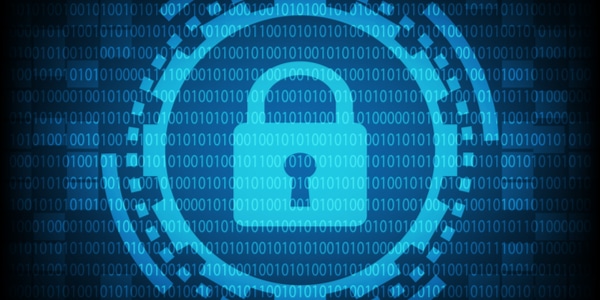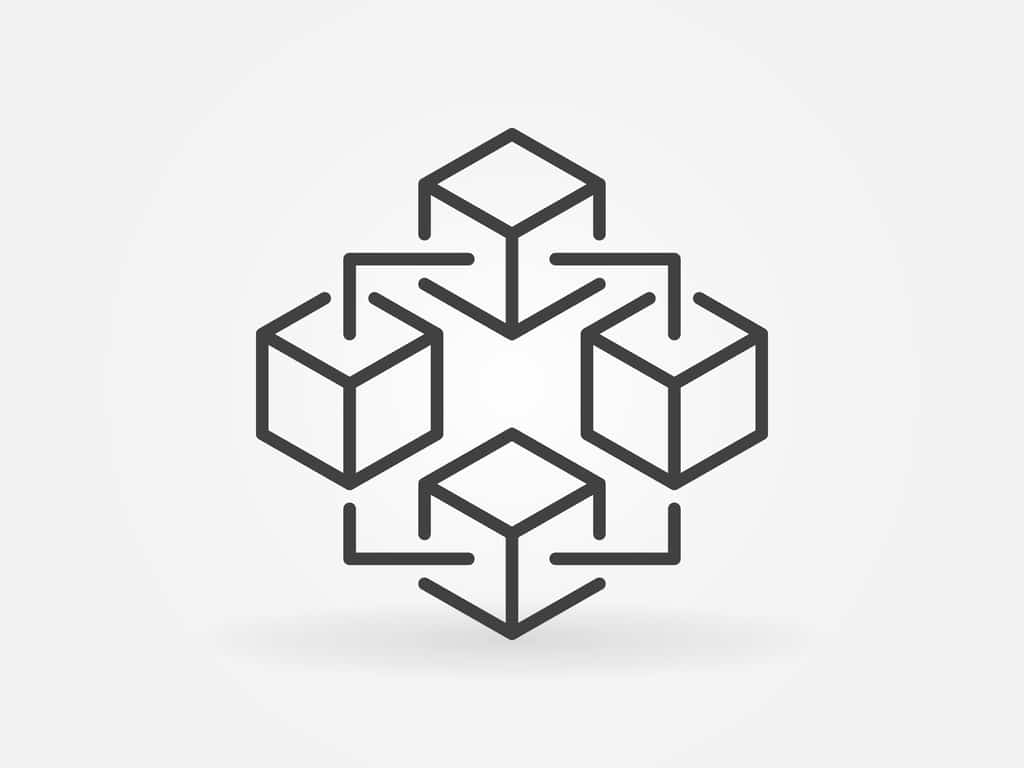With the current noise, everyone has heard of bitcoin, but fewer are those who know the blockchain. Also known as “Decentralized Ledger Technologies”, the blockchain is a major innovation which allows the bitcoin and other crypocurrencies to operate.
You may ask why peoples are so passionate about bitcoin and the blockchain? A first response could be that this technology brings what was missing to the Internet: the possibility of transfer value directly between users without intermediary.
The transfer of value over the Internet as it currently exists is 20 years late in comparison to the transfer of the information which democratization has been permitted by the development of the Internet. In the 1990s, Internet was a network highly compartmentalized composed of sub-networks which did not correspond with each other. For example, if you were a user of AOL email, you could send e-mail messages only to users of AOL. You could not send e-mail to the users of Genie (the ancestor of Gmail). Until SMTP (Simple Mail Transfer Protocol) was created to link all these networks.
It is the same now for the transfers of funds on the Internet. All financial institutions operate independently from each other, with different systems and generally incompatible. This is the reason why, the slightest international transfer takes several days and involves a cost ridiculously high.
The Internet has enabled the transfer of the information freely, the technologies based on the blockchain allow the transfer of value just as freely, immediately, without charge, and without consideration of volume or distance.

What is a blockchain?
A blockchain is a database shared among all the members of a network, which increases without interruption and whose objective is the chronological record, immutable and secure transactions among the members of this network.
Let’s collapse this definition to better understand:
- Database: The initial vocation of a Blockchain is to store data. The blockchain is therefore a folder. The data are stored in blocks sealed and connected to each other using a cryptographic process. In other words, each block is a folder containing information and all of these records are linked to each other.
- In perpetual growth: new folders are created without interruption and related to other at the same rate.
- Decentralized: The database is updated and saved by all the members of the network. Each member of the network has a copy of the blockchain and updates it each time a block is added.
- Chronological: blocks are added one after the other without any possibility to change the order of addition. This point is essential, because the transactions must be added with certainty to avoid double spending of the coins.
- Immutable: To be able to edit a block, the blocks which have been added after him must be changed. However, to do this it would be necessary to modify each of the blockchains recorded by each of the members.
- Censorship Resistant: the fact that each member of the network holds a copy of the blockchain makes it resistant to censorship. In other words as long as all members of the network have not been excluded or neutralized, it is impossible to undermine the integrity of the blockchain. When you think that the bitcoin network is composed of hundreds of thousands of members in all countries of the world, you understand a little better the level of inviolability reached by the bitcoin blockchain.
What problem a blockchain really helps to solve?
The Internet has liberalized the information in facilitating its circulation. It is indeed extremely easy to send a photo or video by e-mail. But in reality, you send a copy of this video and keep the original in your records or in your mail box. The problem with the transfer of value on the Internet is that you must ensure that the original is sent and that no copy is performed. Thus it is not possible to transfer euros on the Internet as you would send photos.
The blockchain solves the problem of the « double expense », because it helps to ensure that the EUR 20 have been transferred only once. Up to today, we were forced to use trusted intermediaries, such as banks to ensure that only the original was transferred without being retained by the transmitter.
This technology therefore has the vocation to eliminate intermediaries by allowing users to exchange directly with each other. Bitcoin enables the exchange of monetary value, but registry Decentralised ledger technologies can apply to all areas of our society. It is indeed possible to record any type of property on a blockchain, dematerialized (music, photos, video, patents, identity papers…), but also the titles representative of material goods (title of ownership, the actions/obligations…), the list is endless.
This technology is a great tool to connect directly users of the Internet who do not know each other and allow them to exchange goods of value without consideration of distance or volume. It is in fact as quick and easy to send a bitcoin to your neighbor than 10 000 to an unknown at the other end of the planet.
Perhaps do you start to understand the reasons of the popularity of this new technology and its revolutionary potential in a society as centralized as ours. All trusted intermediaries could see their monopolies called into question in a near future.
The core elements of a network based on a blockchain.
To simplify, each of these networks is based on a protocol, tokens and a community of programmers, minors and of users.
The best way to understand the organization of a network based on a blockchain is to compare it to a national economy. A national economy consists of a currency (tokens) which is used by the citizens (community) according to the rules determined by the law (the Protocol) and stored in a banking system (the blockchain).

Each project based on a blockchain is an autonmous ecosystem that does not belong to anybody and at the same time to all members of the network who have downloaded the protocol on their computer in order to get access to the network.
There are now many types of structure, but to keep it simple we continue to take the bitcoin as example. If you want to access the bitcoin network and exchange bitcoins with other members, you must start by downloading a bitcoin compatible portfolio which function will be to store your bitcoins and create transactions. But what is generally not said is that by downloading your portfolio, you download a copy of the Bitcoin Protocol which allows you to access the network.
The protocol is a computer program created by the developer members, which brings together all the operating rules of the network (Constitution of transactions, their addition to the blockchain, interaction among membres, creation and circulation of tokens…).
The tokens are generated by the minor members according to the rules established in the protocol. These tokens are used by all the members of the network to exchange the value within the network and outside through cryptocurrencies exchanges.
Each of these ecosystems goals is to solve a specific problem. The objective of the bitcoin is to transfer value on the Internet, but there is also Ripple whose objective is to connect banks in order to facilitate transfers between institutions, Ethereum which is a platform offering a developing environment for decentralized applications ( » Dapps »). Each cryptocurrency tries to solve a different problem.
The type of goal that has set the ecosystem also determines the type of blockchain used.
The different types of blockchains?
There are currently three types of blockchain: public, private, and consortium.
Public blockchains
Public blockchains are open to all, without any selection. In other words, anyone can become a member of the network by downloading the protocol which is open source and accessible to any person who has an Internet connection. To obtain a decentralized network without any intermediary, it is essential to put in place a public blockchain. In the current state of the technology, this type of blockchain is however very heavy to implement because of the complexity of the consensus mechanism.
Consensus mechanism is used by the minors to determine which one will have the right to add the block to the blockchain and get the reward (currently, 12.5 blocks plus the fees paid by the users to transfer their bitcoins). It is important to understand that minors are in competition with each other. Mining bitcoins is a business like other, minors have invested in computer equipment, Internet connections and electricity for the provision of the network in the hope to add blocks and retrieve the reward.
But the system of the « Proof of work » (« Proof of work »), which is still the most used system at the present time, is very complicated to implement and limit the development of the network. This method also involves a disproportionate consumption of energy which is reflected on the growing transactions costs.
This is the price to pay to obtain a network perfectly decentralized and autonomous. Yet this type of blockchain is not suitable for all types of projects.

The Private blockchains and Consortium
Access to a private blockchain is limited to members pre-approved. In other words, a member must respond to the conditions pre-established by the creators of the blockchain in order to access to the network and the services offered by the blockchain. The consensus mechanism is concentrated in the hands of one entity.
The problems of security being much more simple in the case of private blockchains because membres are known, it is possible to apply a consensus mechanisms much simpler, efficient and therefore easy to deploy such that the Bizantin Fault Tolerance. You probably wonder what these private blockchains may bring in comparison to shared databases as we currently know them?
The flexibility of this type of blockchain fits a large number of industries which have the constraints of operational or regulatory types.
For example, a distribution business that wishes to follow each of the products of its stocks using a blockchain could choose to use a private blockchain for its immutability, transparency, security and flexibility properties. Such company would have no need to use a public blockchain.
Similarly, a network of bank wishing to use a blockchain to perform and record transactions would be held by regulatory obligations of confidentiality and therefore forced to use a private blockchain or at least a Consortium as did the R3 network with its Platform of Smart Contracts » Corda ».
Thank you for reading this article. If you enjoyed it, please do not hesitate to share it on social medias!!





[…] A general introduction on blockchain […]